Will Gompertz review: Civilisations on BBC Two ★★☆☆☆
- Published

You know how it is with cooking, or painting or sculpting - the art is in knowing when to stop.
Great artists of the kitchen or the studio appreciate there is a very fine line between making one more tiny adjustment that takes their creation from excellent to sublime, or conversely, risks turning it into a messy failure.
The same applies to TV.
By adding a single pluralising letter to the classic BBC art history series Civilisation (1969), the programme makers of Civilisations opened up the tantalising possibility of producing a new TV series that didn't simply match its singular predecessor, but was much better.
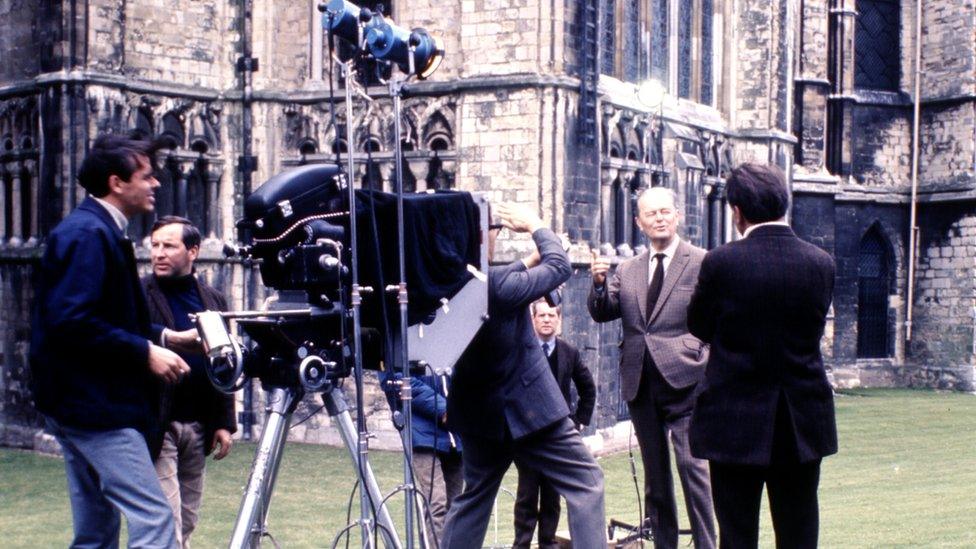
Kenneth Clark being filmed for his landmark Civilisation series
You can see the sense in the idea. Instead of an old-fashioned, patriarchal, white, western, male view of human cultures and creativity, why not make a show that acknowledges there are different civilisations and different views, which can be put across by different presenters? (In this case, three TV-ready, scarf-wearing academics: Mary Beard, David Olusoga and Simon Schama.)
Great. In theory. But in practice, well...
It turns out adding that extra "s" has gone and over-egged the pudding. For all its faults (partial, dogmatic, occasionally dismissive), the Kenneth Clark written and presented originals had a clarity, structure, and coherent argument that made them fascinating to watch and easy to follow.
In contrast, from the programmes I have seen, Civilisations is more confused and confusing than a drunk driver negotiating Spaghetti Junction in the rush hour.
Simon Schama travels to the civilisations of Petra.
Like Simon Schama's gyrating hands, which often seem to be enjoying their own private silent disco, large chunks of the individually authored films are all over the place.
The series starts with Schama - who has "always felt at home in the past" - showing us library footage of an Islamic State wrecking crew in Mosul destroying ancient art and artefacts.
He tells us the grisly story of how they brutally murdered the 82-year-old Syrian scholar Khaled al-Asaad for withholding information from them as to the whereabouts of the antiquities under his curatorial care in Palmyra.
"The record of human history brims over with the rage to destroy," the historian tells us with his passion dial turned up all the way to 11 (it rarely dips below 10).
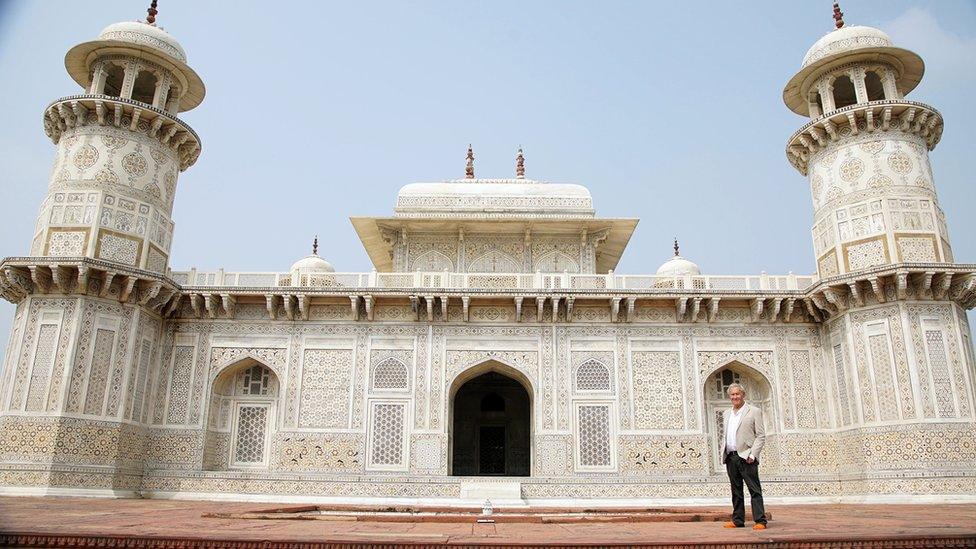
Simon Schama outside Itimad-ud-Daulah's Tomb in Agra, Uttar Pradesh
There is no mention made of similarly barbaric acts that have taken place over millennia - on occasion perpetrated by a civilisation much closer to home - or an explanation as to the cultural rationale behind the actions of those wielding the sledgehammers in this instance.
No time for nuance, I suppose, the show must go on, so we can "see the world and our place in it in a different light".
Next comes the elevator pitch for the whole series delivered by our presenter with movie trailer-type hyperbole: "We are the art-making animal and this is what we've made!"
Music swells, titles roll, and we're off - back to the beginning and the caves of South Africa, where we are shown a 77,000-year-old block of red ochre with the "oldest deliberately decorative [human] marks ever discovered".
This is "the beginning of culture", Schama tells us, but he doesn't dwell. Moments later we're travelling through time and space like Doctor Who in a sci-fi remake of Treasure Hunt, touching down around 40,000 years later in northern Spain to visit El Castillo Cave.
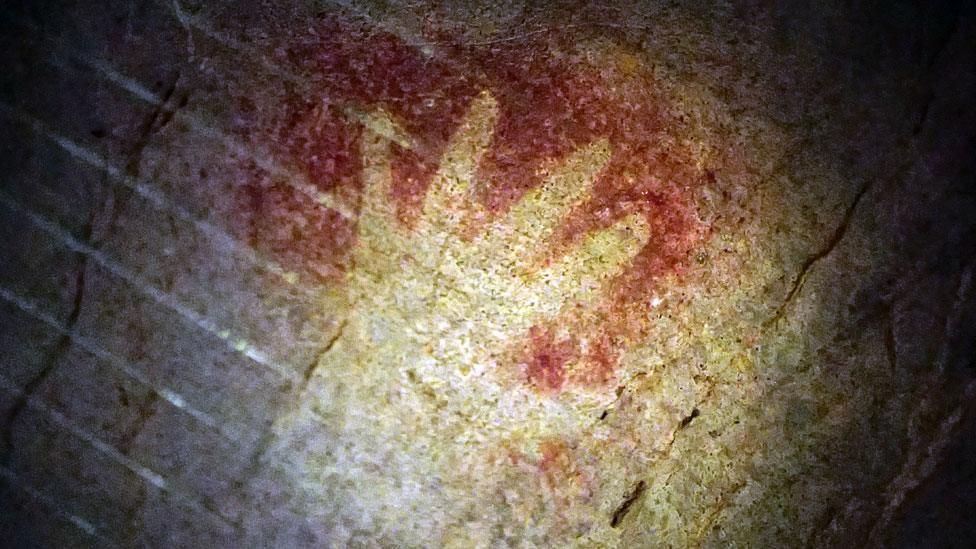
Hand Stencils found in the Cave of El Castillo in Spain
Here, both the programme and the presenter start to settle down and enjoy what they've brought us to see: cave paintings and hand stencils.
Apparently similar images have been found "as far apart as Indonesia and Patagonia", which is interesting. But then frustrating as no explanation is forthcoming to enlighten us as to why that might be.
We are told: "These hand stencils do what nearly all art that would follow would aspire to. Firstly, they want to be seen by others. And then they want to endure beyond the life of the maker."
Really? Was that actually the motivation behind our stencil-making ancestor? Was he or she honestly most concerned with artistic ego and posterity? Were the painted hands even intended as art? Could they not have been a functional way-finding device or a ritualistic mark or part of a magical spell?
As we know from his previous docs, Schama's on-screen charisma and infectious enthusiasm make him very good televisual company. But his warmth and energy cannot conceal the problems with this first episode and the series in general, which is the absence of an intellectual argument with a discernible through line.
These are patchwork programmes with rambling narratives that promise much but deliver little in way of fresh insight or surprising connections.
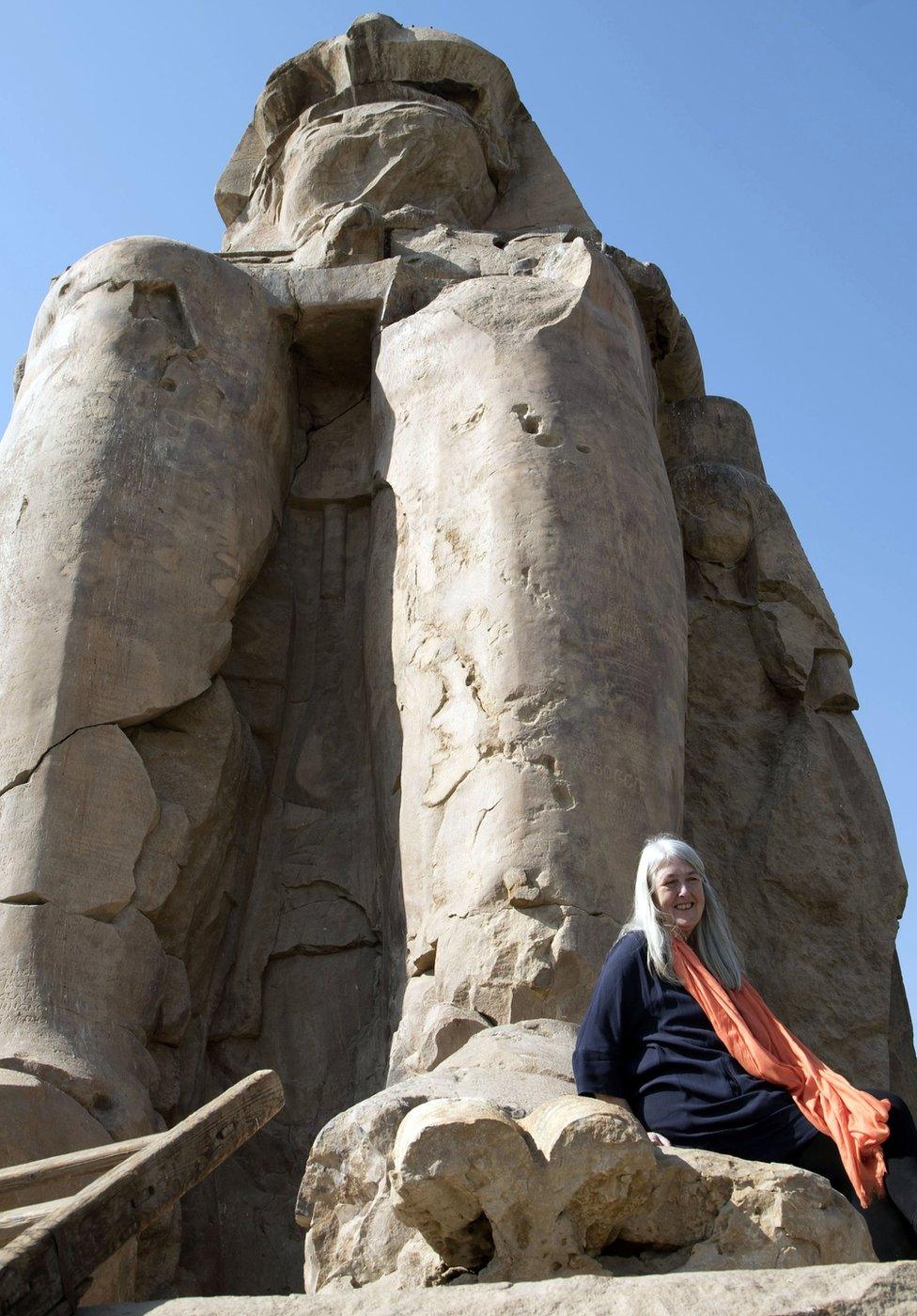
Co-presenter Mary Beard at the Colossi of Memnon in Luxor, Egypt
Mary Beard's episode, How Do We Look, is particularly disappointing because the premise is so enticing, as is the prospect of one of our foremost thinkers on matters cultural giving us a new perspective.
Sadly, other than a couple of memorable TV moments when Beard encounters an ancient statue for the first time, we are offered little to excite our imaginations.
We don't get the alluded-to update on Clark's Eurocentric views or on John Berger's Walter Benjamin-inspired Ways of Seeing series.
There is no substantial new polemic with which to wrestle. Instead we are served a tepid dish of the blindingly obvious (art isn't just about the created object but also about how we perceive it), and the downright silly (an ancient story about a young man who supposedly ejaculated on a nude sculpture of Aphrodite thousands of years ago, which Beard describes with great theatricality as rape - "don't forget Aphrodite [the stone statue] never consented").
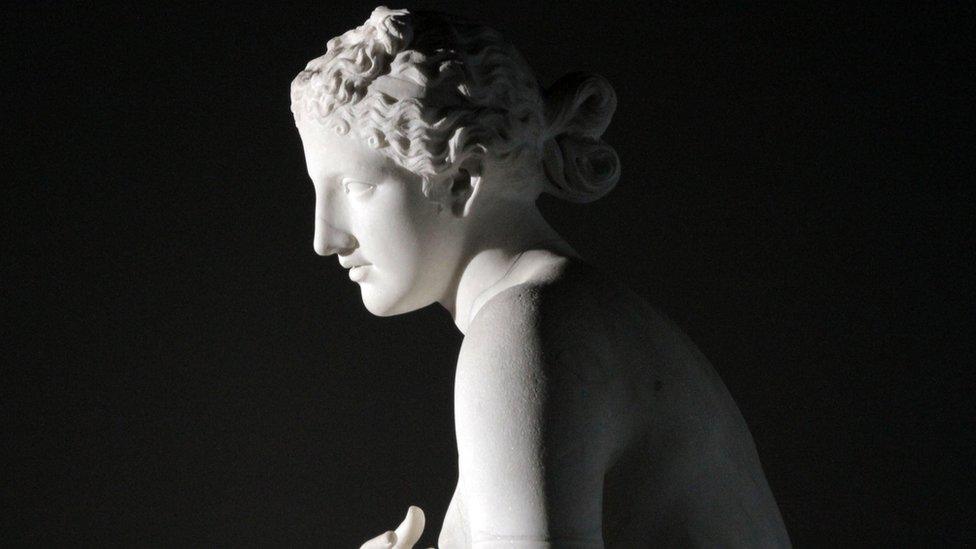
Aphrodite of Menophantos, Praxiteles, (4th Century BCE), Palazzo Massimo alle Terme, Rome
David Olusoga is altogether more measured and less mannered than his fellow presenters. His two films - one exploring the meeting of cultures between the 15th and 18th Centuries, the other looking at the enlightenment and industrialisation - benefit from his inquisitive nature and relaxed style.
If the scripts in the series are far from being literary masterpieces, the camerawork is of the highest quality throughout - although there are too many stylised shots of out-of-focus presenters with their backs to us.
But when trained on art and artefacts, the new technology and techniques at the 21st Century TV director's disposal provide us with plenty of delicious visual treats (the images from Simon Schama's trip to Petra are stunning).
Ultimately though, Civilisations feels like a series made by committee: a terrific-sounding idea on paper that I suspect was a lot harder to realise in practice.
The result is a well-intentioned, well-funded series that has top TV talent in all departments but which ended up being less than the sum of its parts. A case of too many cooks, maybe?
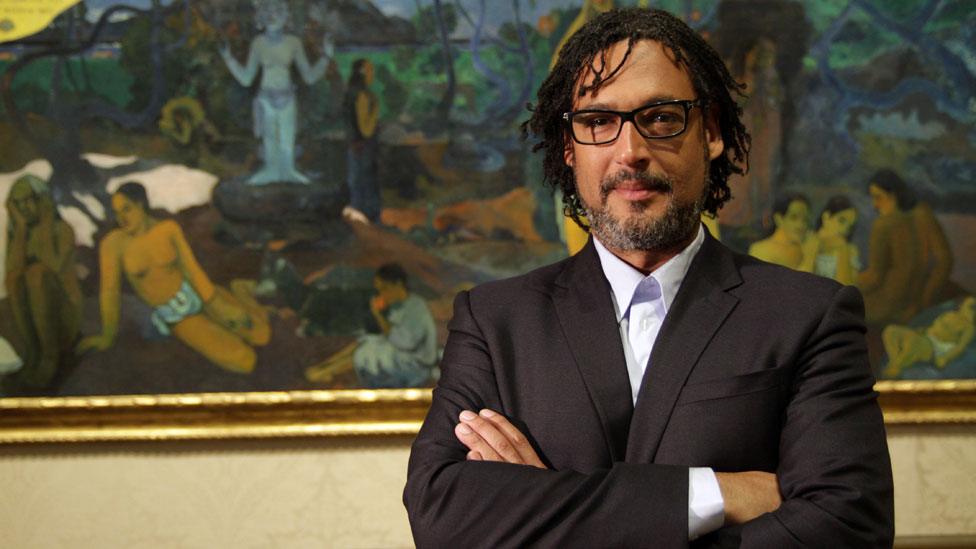
David Olusoga with Gauguin's Where Do We Come From? What Are We? Where Are We Going? at the Museum of Fine Arts, Boston
- Published20 December 2015
